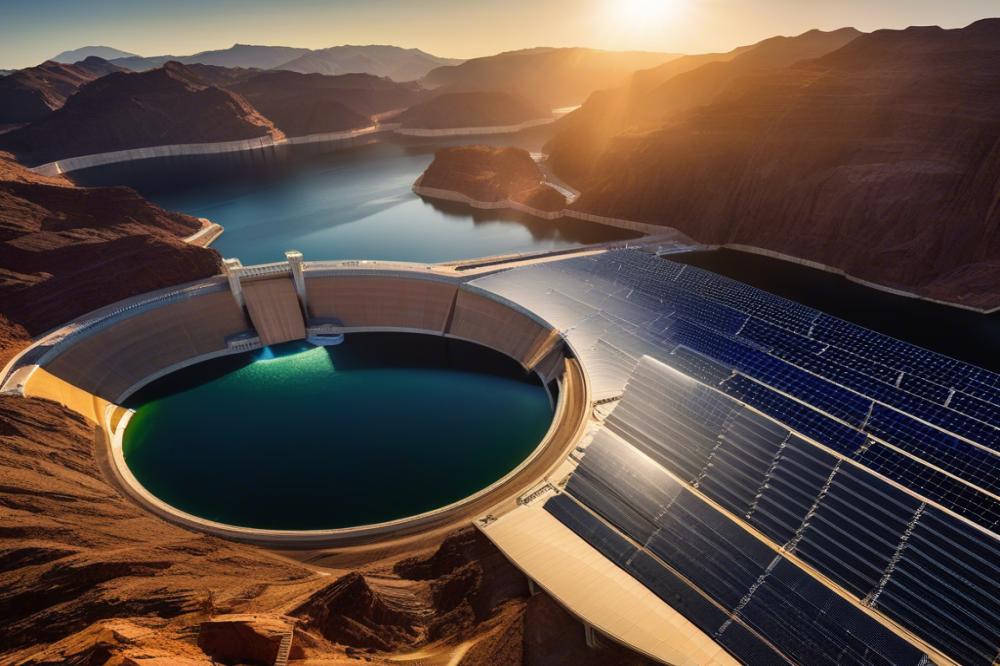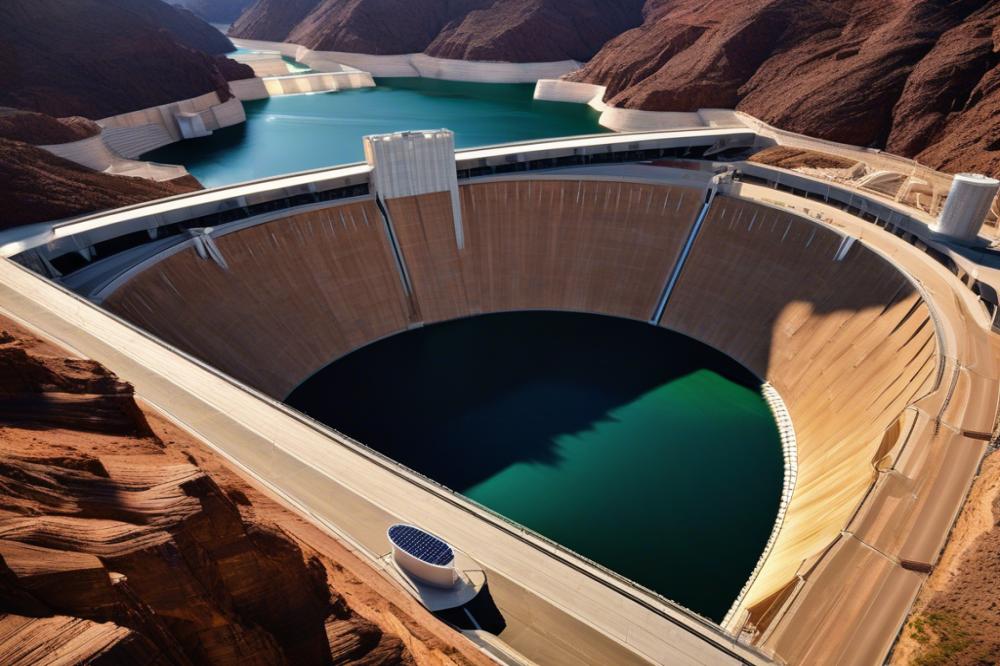Revolutionizing Hydropower: How Solar Panels are Transforming the Hoover Dam and Similar Projects Worldwide
Introduction
The demand for clean energy continues to rise. In this changing landscape, advancements in hydropower are vital for our planet. By integrating innovative technologies, we can enhance energy efficiency and support sustainable development. The Hoover Dam stands as a symbol of hydropower’s potential, but it is now emerging that solar panels can play an incredible role in revolutionizing such facilities.
Bringing solar panels into the mix creates what experts call dual energy systems. This approach allows existing hydropower plants to produce even more energy. Dams and their surrounding pools often have a considerable amount of unused space that can effectively host solar panels. This would not only optimize their output but also promote greater reliance on renewable energy sources.
This article will explore how Solar Integration is changing the way we view traditional hydropower stations. Readers can expect a closer look at not only the Hoover Dam but also similar projects worldwide. The focus will be on the interplay between solar technology and hydropower, paving the way for an energy transformation that emphasizes clean energy and green technology. The discussion is essential for understanding how we can adapt and optimize energy production in an environmentally friendly manner.
Hydropower Innovation: The Role of Solar Panels

Hydropower has been a cornerstone of renewable energy for decades. Its innovation is crucial in the fight against climate change. Integrating solar panels into traditional hydropower systems is a game changer. This combination can make energy generation more efficient while promoting sustainable development.
The Hoover Dam stands as a monumental example of how hydropower can benefit from green technology. Adding solar panels on its vast infrastructure creates a dual energy system. With sunshine harnessed alongside flowing water, these projects can push the boundaries of energy efficiency.
Employing both solar and hydropower offers numerous advantages. Combining two sources of clean energy maximizes output, especially during peak demand times. Solar panels generate electricity during sunny days. Meanwhile, hydropower plants can chime in, supplying energy day and night. This balance enhances overall performance.
Moreover, integrating these technologies fosters a spirit of innovation. As countries confront energy issues, such approaches can lead to fresh solutions. Sustainable development becomes more attainable when projects utilize multiple energy sources. The focus shifts toward a more holistic view of clean energy production.
Dual energy systems not only increase supply but also lower costs. The more energy produced from renewables, the less dependence on fossil fuels. This shift contributes significantly to long-term sustainability goals. As the world turns toward cleaner options, projects like the Hoover Dam will inspire others to follow suit.
Additional benefits include reducing wear and tear on each system. Hydropower facilities can run at optimal levels, while solar panels absorb excess sunlight. This collaborative effort ensures that both forms of energy work in harmony. Innovations like this are paving the way for future developments in the energy sector.
In conclusion, merging solar panels with hydropower plants fosters an era of energy transformation. It empowers communities with more reliable power. As we explore this new frontier, the synergy between these technologies continues to redefine the landscape of energy production.
The Case of Hoover Dam

Hoover Dam stands as a historic symbol of renewable energy. Completed in the 1930s, itwas a engineering marvel of its time. The dam has played a vital role in providing clean energy through hydropower plants. Generating electricity in the southwestern United States, it has transformed energy distribution in the region. This large concrete structure also helped manage floods and provided vital water supplies. Over the decades, Hoover Dam has become synonymous with progress and sustainability.
Recently, there have been exciting initiatives to incorporate solar panels at Hoover Dam. The push for solar technology aligns with the global shift toward sustainable development. These panels promise to enhance energy efficiency while adding a new layer of innovation. Plans propose placing them atop the dam’s infrastructure, allowing a seamless integration of dual energy systems. As a result, sunlight will complement the hydropower that already flows from the dam.
The impact of these solar panels on energy transformation is significant. More clean energy will be produced without disrupting the current operations. This shift will increase overall energy output, potentially providing power for thousands more homes. Furthermore, it creates a model for hydropower plants around the world. Combining solar and hydropower can inspire similar projects globally, showcasing the power of green technology.
Global Trends in Solar Panels for Hydropower Plants
Adopting Solar Technology Worldwide
Integrating solar panels into hydropower plants is becoming increasingly popular. The Hoover Dam is one notable example of this trend. Solar technology enhances energy efficiency by capturing sunlight and generating renewable energy alongside traditional hydropower. Countries across the globe are experimenting with similar projects. For instance, India has launched several installations that combine solar arrays with existing hydropower facilities. This approach allows plants to maximize their output throughout the day. Similarly, Canada is exploring options for integrating solar into their extensive hydropower systems. The idea is to create dual energy systems that can utilize both water and sunlight.
Sustainable Development Goals
Innovations in solar and hydropower work towards broad sustainable development goals. Many nations aim to reduce their dependency on fossil fuels. Combining solar panels with hydropower significantly contributes to this objective. Clean energy production is essential in combating climate change. Moreover, these projects boost local economies by creating jobs in renewable energy sectors. Additional benefits include more resilient energy systems that can better withstand climate-related disruptions. This duality enhances energy security for communities relying on consistent power sources.
Challenges and Successes
Integrating solar systems with hydropower presents various challenges. One significant issue is the initial cost of installation. Upfront investments can be daunting for some projects, especially in developing regions. Maintenance can also become complicated, as operators must ensure both systems function efficiently. Furthermore, weather conditions may affect solar output, especially in areas with limited sunlight. Despite these hurdles, many projects have achieved impressive results. Facilities successfully harnessing multiple energy sources tend to yield higher outputs. In some cases, local energy grids reap the rewards of increased stability and reliability. Overall, collaborative efforts between renewable sectors showcase the potential of innovative technologies to reshape how energy is produced and consumed.
The Future of Clean Energy and Green Technology
Exciting developments are on the horizon for solar-hydropower hybrid systems. Combining solar panels with traditional hydropower plants offers a promising path for energy transformation. The Hoover Dam, a symbol of engineering innovation, could serve as a model for similar projects worldwide. By integrating solar technology, these facilities can operate more efficiently and generate additional clean energy.
Investing in renewable energy infrastructure is critical for future sustainability. As the world grapples with climate change, the push for greener solutions becomes more pressing. Enhanced energy efficiency in projects can significantly reduce dependence on fossil fuels. This shift can lead to a more resilient power grid and foster sustainable development at a larger scale.
Support from policy makers and local communities plays a vital role in advancing these technologies. Encouraging regulations can create incentives for businesses and homeowners alike to adopt solar solutions. By nurturing innovation, countries can develop dual energy systems that combine hydropower’s reliability with solar’s adaptability. Community awareness and engagement ensure that these initiatives have the backing they need.
Investments in green technology create jobs and stimulate economic growth. As awareness of environmental issues increases, there is a growing demand for clean energy sources. Hydropower plants equipped with solar panels can help meet this demand while reducing carbon footprints. Together, these resources work towards a cleaner future, blending the old with the new.
Ultimately, the promise of hybrid systems lies in their ability to harness multiple energy forms. This approach not only maximizes output but also trims costs for consumers. As innovations unfold, monitoring progress will be crucial. Society stands at a pivotal moment, where thoughtful choices can unleash the potential of renewable energy on a global scale.
Embracing Change for a Sustainable Future
Solar panels present a revolutionary opportunity for hydropower projects worldwide. When integrated with existing structures like the Hoover Dam, these technologies can enhance energy production while reducing environmental impacts. The combination of solar and hydropower creates a more resilient and versatile energy system. This innovative partnership elevates the role of renewable energy in our efforts to combat climate change.
Investing in strategies that merge solar technology with traditional hydropower is essential. Such advancements not only optimize efficiency but also make the best use of valuable resources. By venturing into this new frontier, we can capture the sun’s power to boost sustainable energy output.
It’s time for governments, businesses, and communities to take action. We should advocate for policies that support the development of hybrid energy projects. Collaboration among stakeholders will help drive this necessary transition.
Sustainable development is crucial as we navigate the future of energy generation. Society must prioritize practices that protect our environment while meeting our growing energy needs. The combination of solar and hydropower could play a significant role in this journey. Embracing these technological innovations holds the key to a cleaner, greener world.



